Motorola supersizes its flip phone cover screens with the Razr 50 Ultra and Razr Plus 2024
Motorola's latest flip phone, the Razr 50 Ultra (named the Razr Plus 2024 in the US) sports the biggest cover screen of any flip phone and upgraded cameras
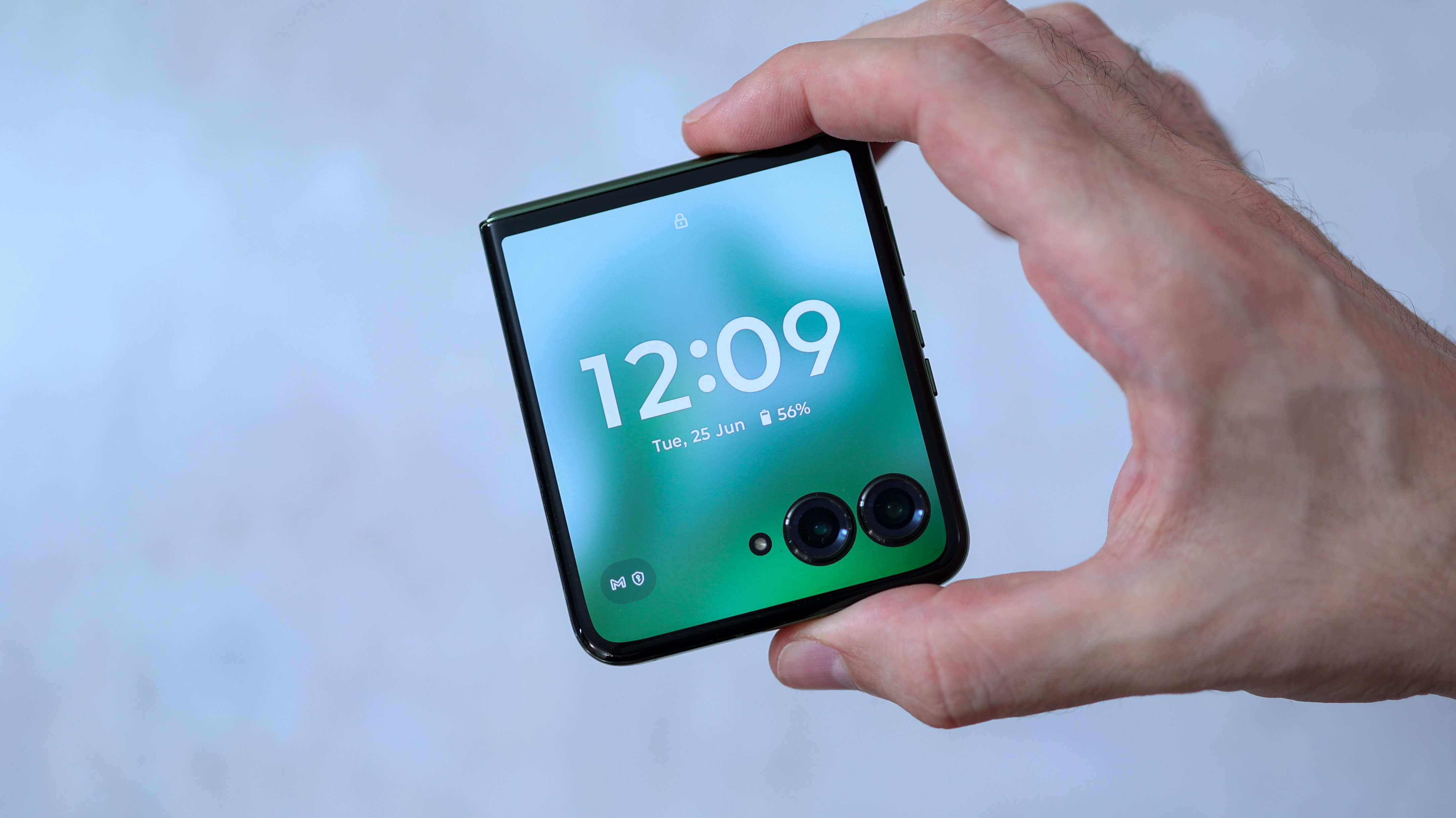
Motorola has announced two new flip phones, the Motorola Razr 50 (Razr 2024 in the US) and Razr 50 Ultra (Razr Plus 2024 in the US). We got our hands on the flagship for a quick flip and snap to try out its camera and that oversized cover screen ahead of our full review.
Moto's new flip phones aren't cheap, but with the Razr 50 costing £799 (approximately $1010 and AU$1495), and the Razr 50 Ultra costing £999 (approximately $1265 and AU$1870), the price of flexible screens is slowly starting to mainstream.
The headline grabber of both phones is the size of their cover screens, with Motorola bumping up the Razr 50 Ultra's to 4 inches, larger than the 3.5-inch screen on the original iPhone. Indeed, turning it on, the phone looks like it's plucked from the future as its entire fascia lights up.
With upgraded specs, a Qualcomm Snapdragon 8s Gen 3 for 2024-grade power, as well as Google Gemini AI out of the box, the Razr 50 Ultra looks set to be relatively future-proofed, and its camera has also gotten a spec bump, with a dual-50MP system sporting one wide and one telephoto camera.

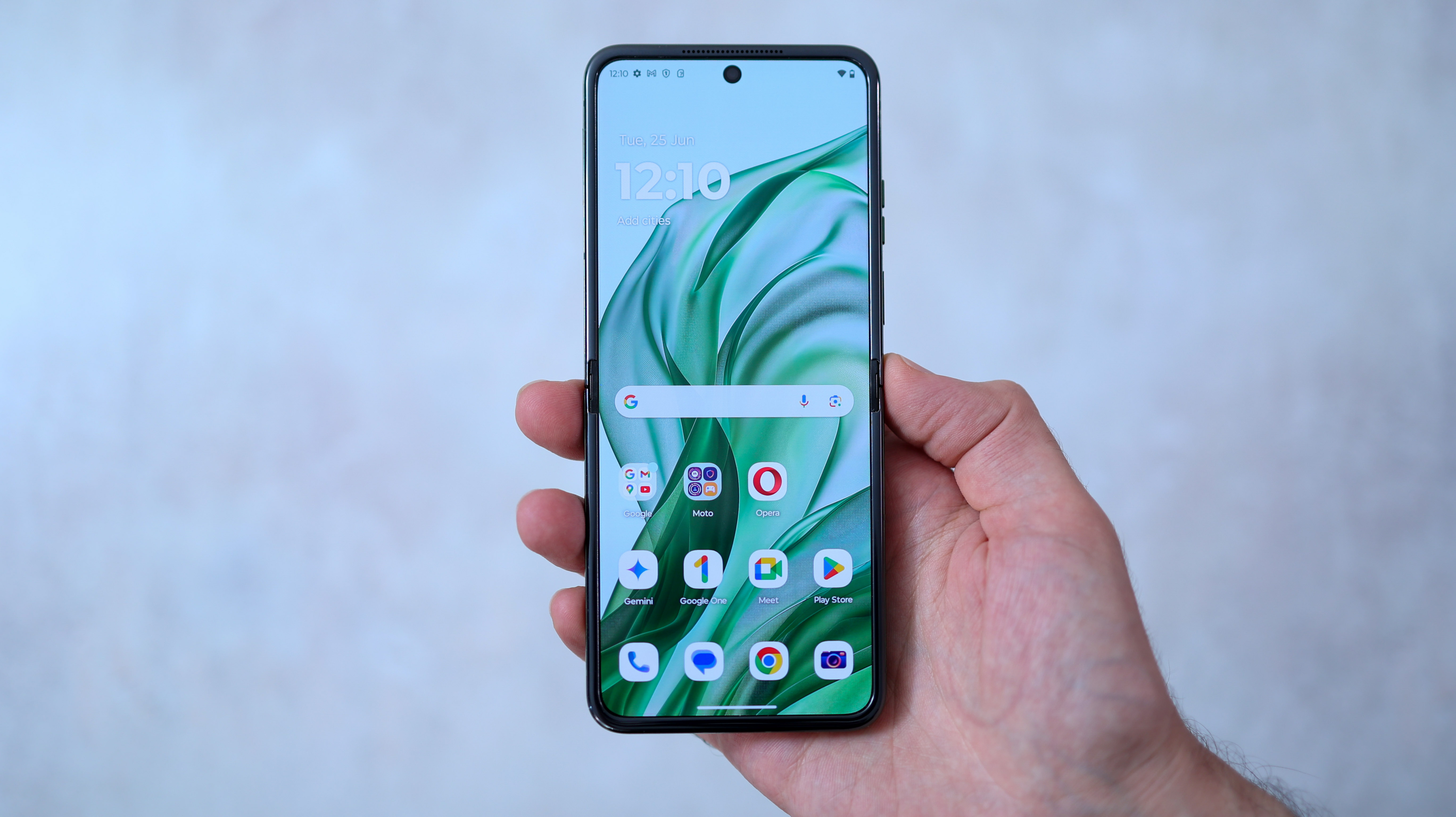
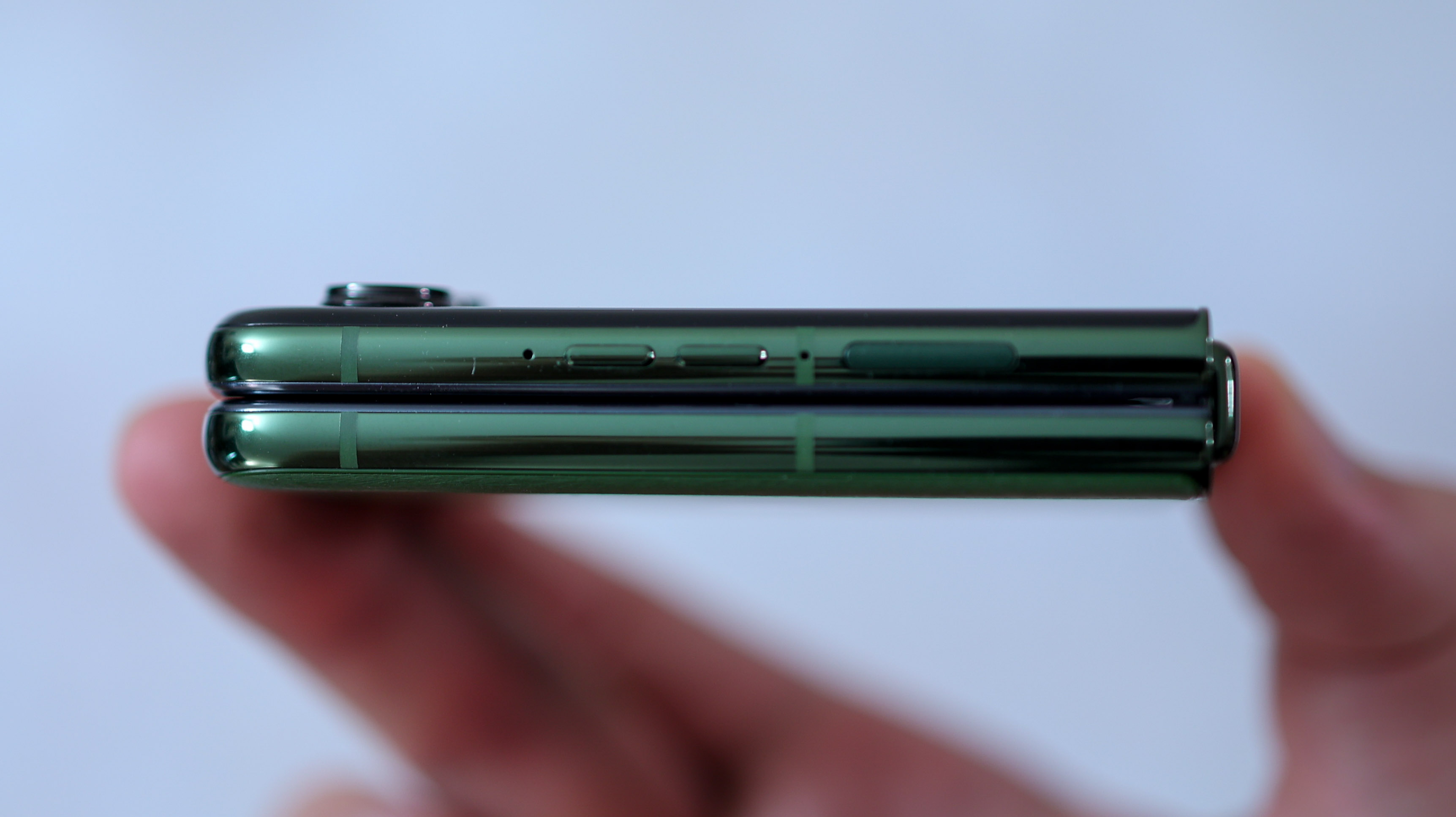
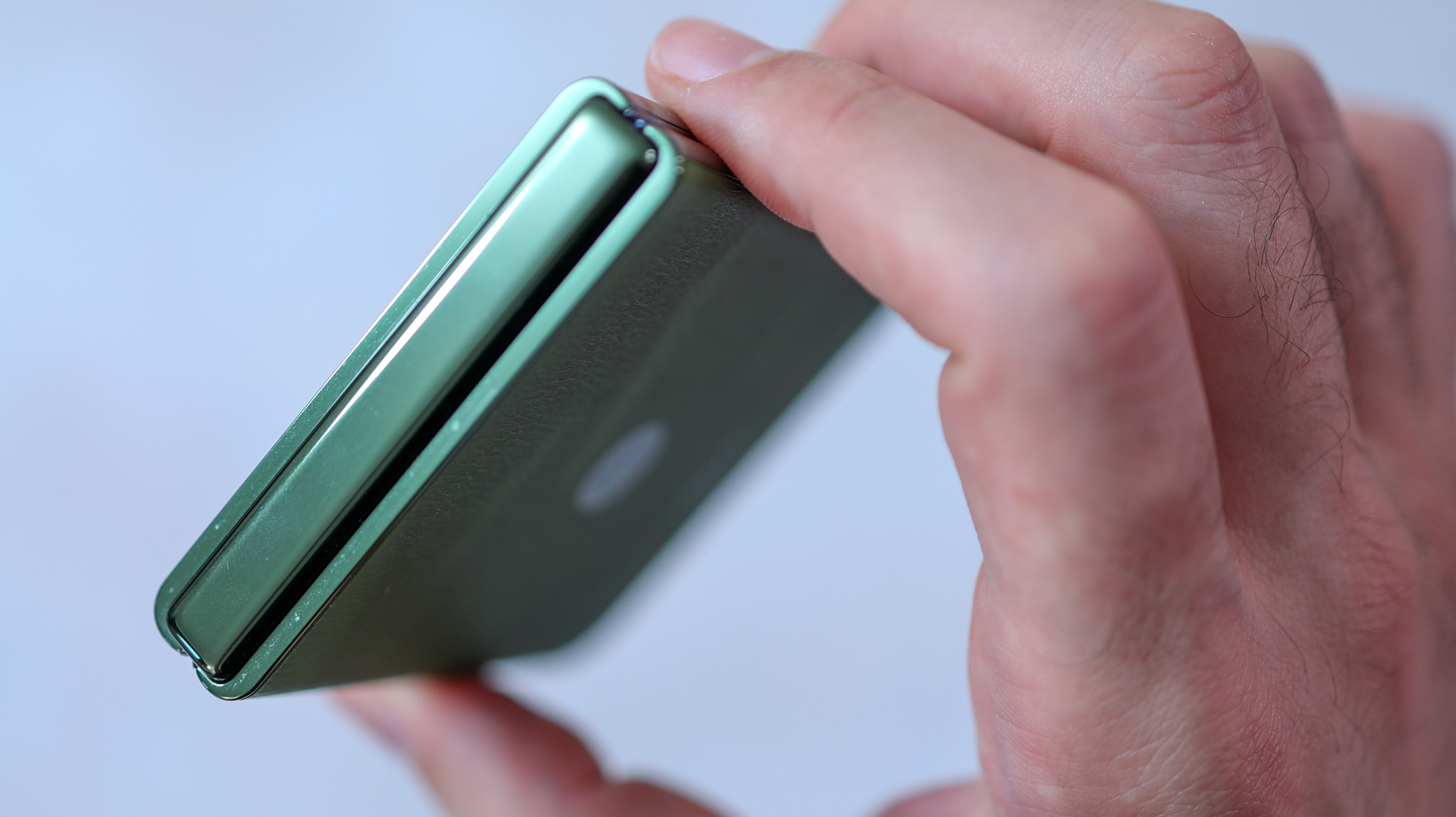
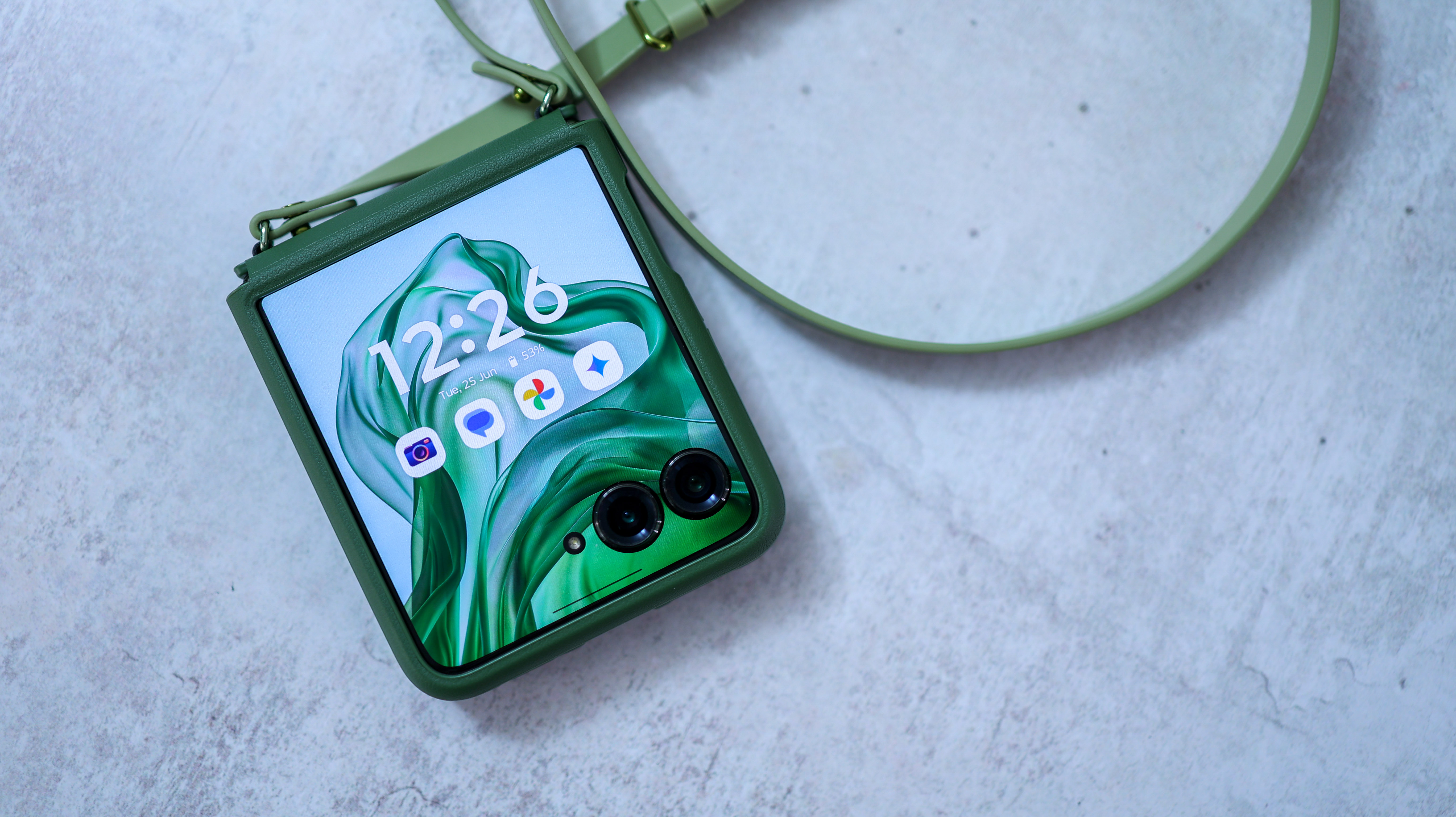
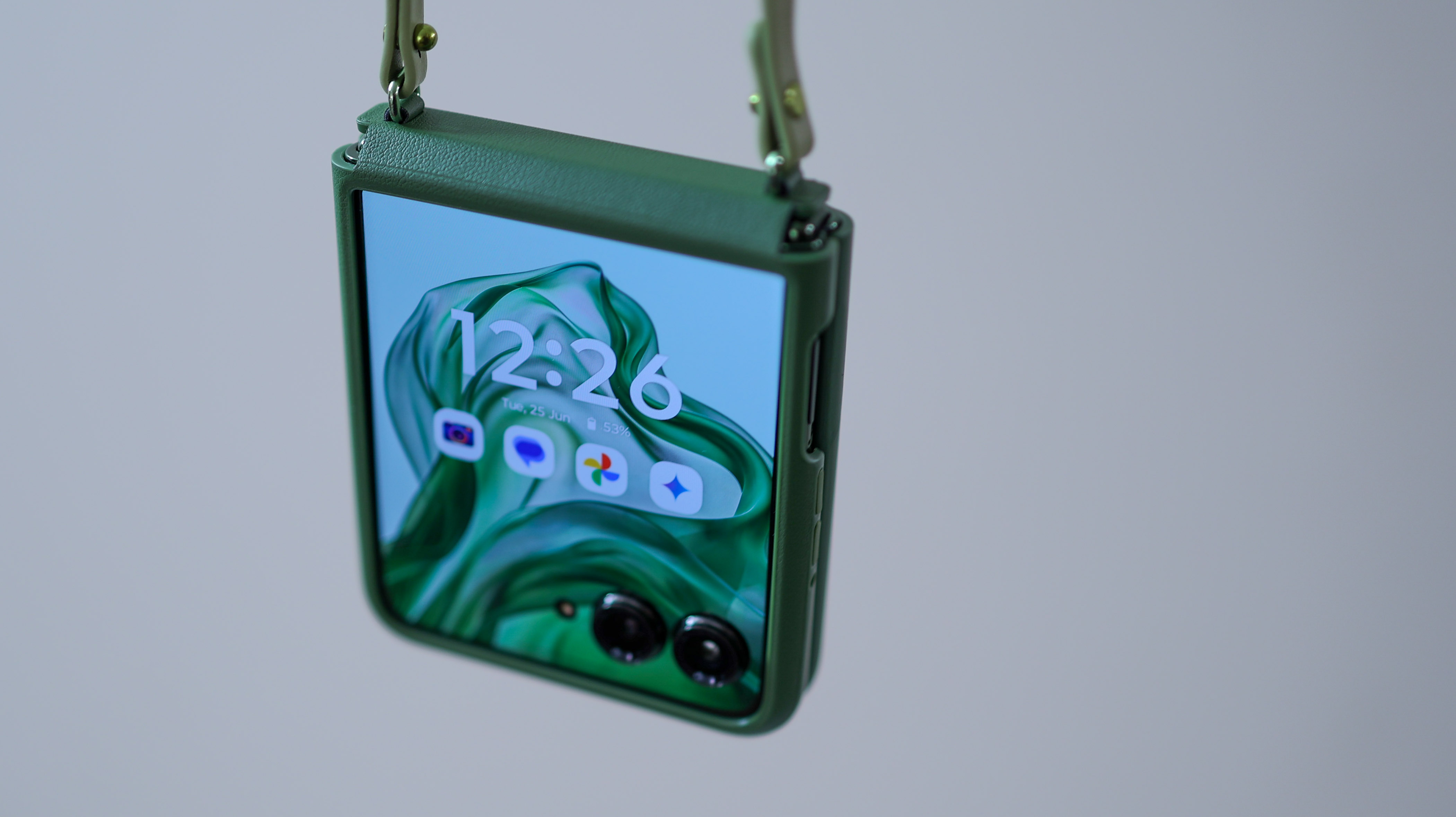
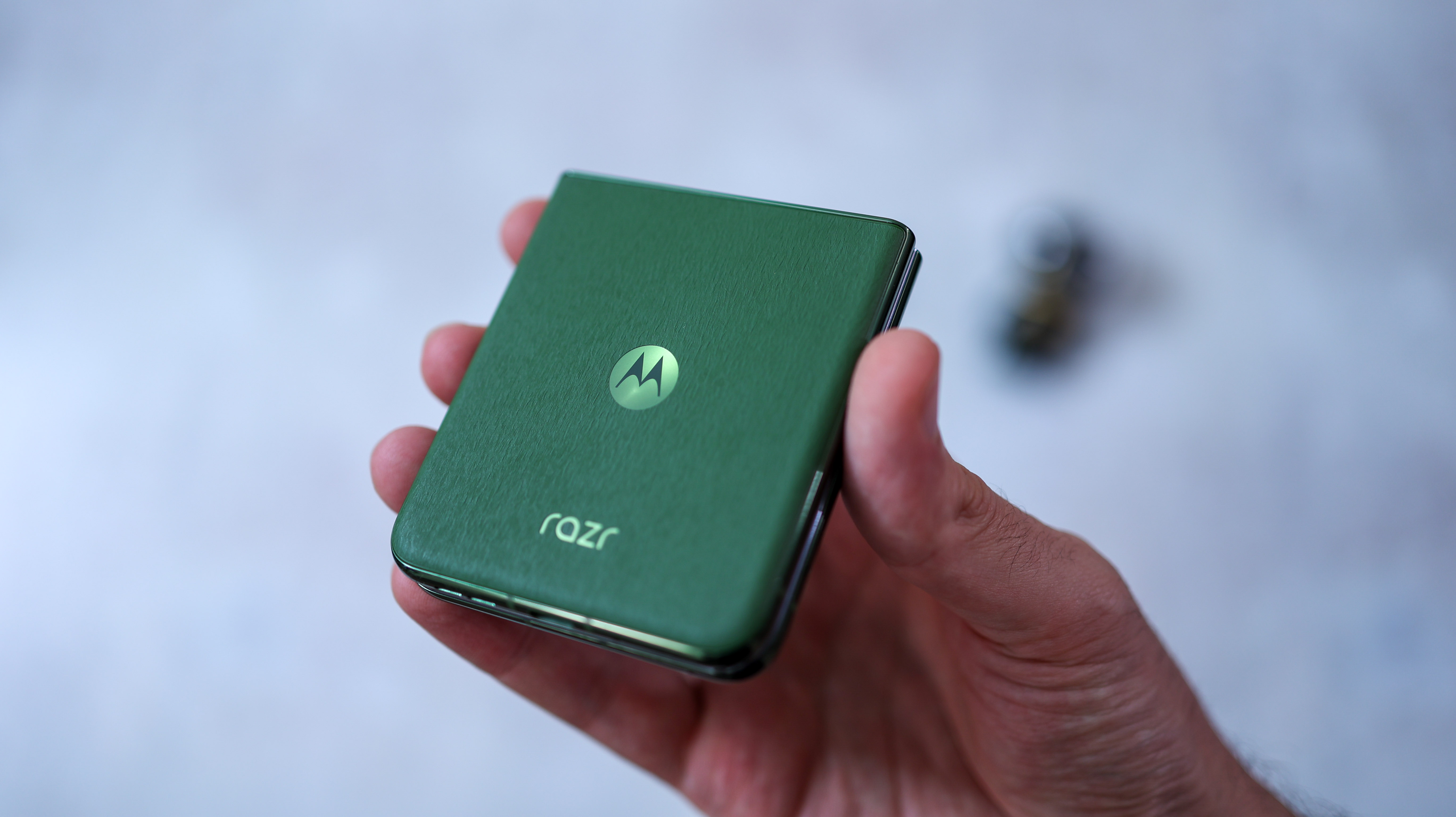
Razr 50 Ultra photography and video
Foldables, and in particular, flip phones struggle to compete with traditional phones when it comes to photography. After all, good camera lenses and sensors are big, and space is at a premium when a phone folds in half. As a result, every flip phone compromises on cameras, whether you're talking about the Samsung Galaxy Z Fold 5 or even the class-leading Oppo Find N3 Flip. Unsurprisingly, this is true of the Motorola Razr series, too.
So while compared to other comparably priced phones, the Razr 50 Ultra's camera specs don't read well, the setup is still a step up compared to last year's Razr 40 Ultra, with a primary 50MP sensor, likely the Samsung GN8 ISOCELL sensor in the Galaxy A35. Combining OIS with a fast f/1.7 lens, the Razr 50 Ultra captures shots at 12.6MP by default.
While last year's Razr featured an ultra-wide camera alongside the main camera, Moto's shaking things up for 2024 with a 2x telephoto camera, also clocking in at 50MP. Looking at the specs, this is probably a Samsung ISOCELL JN1 sensor, and while the lens lacks OIS, it does sport a relatively fast f/2.0 aperture.
Get the Digital Camera World Newsletter
The best camera deals, reviews, product advice, and unmissable photography news, direct to your inbox!
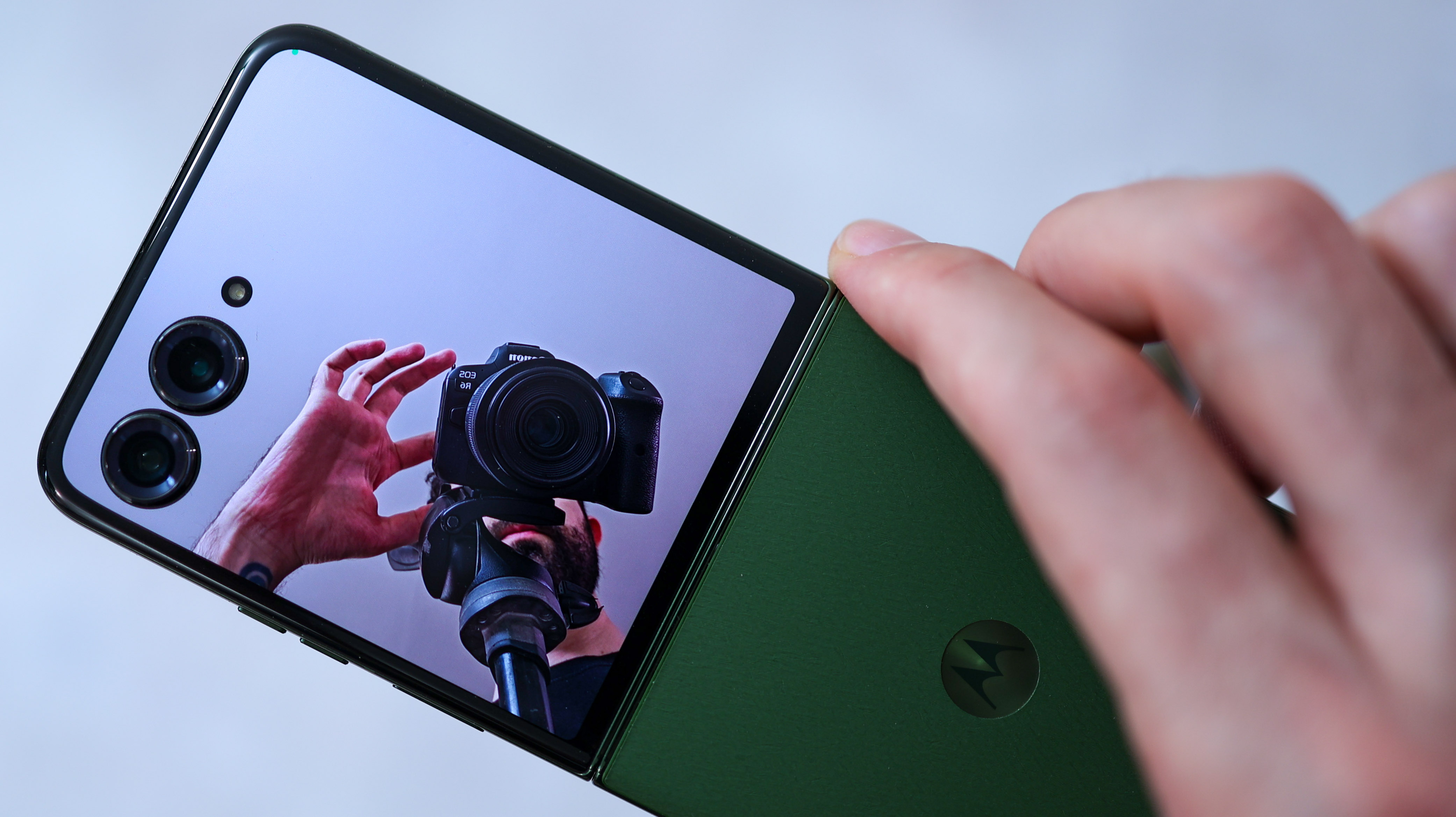
Technically, both these cover cameras are also selfie cameras thanks to flip phone ergonomics, but if you want to snap selfies when your Razr 50 Ultra is open, Motorola also loads up a 32MP punch-hole selfie camera inside. This combines an Omnivision sensor, f/2.4 aperture, and an 8MP picture output resolution.
The camera also supports the now-standard array of part-folded shooting modes, so it's easy to steady it on a surface for long-exposure night shots or hold it sideways for camcorder-style video recording. You can also give subjects a preview of themselves on the Razr's cover display.
Part-folded camera antics also extend to video recording, saving you from needing a tripod for some hands-free capture. The Razr 50 Ultra's 4K video caps out at 60fps, and the phone also records HDR video.
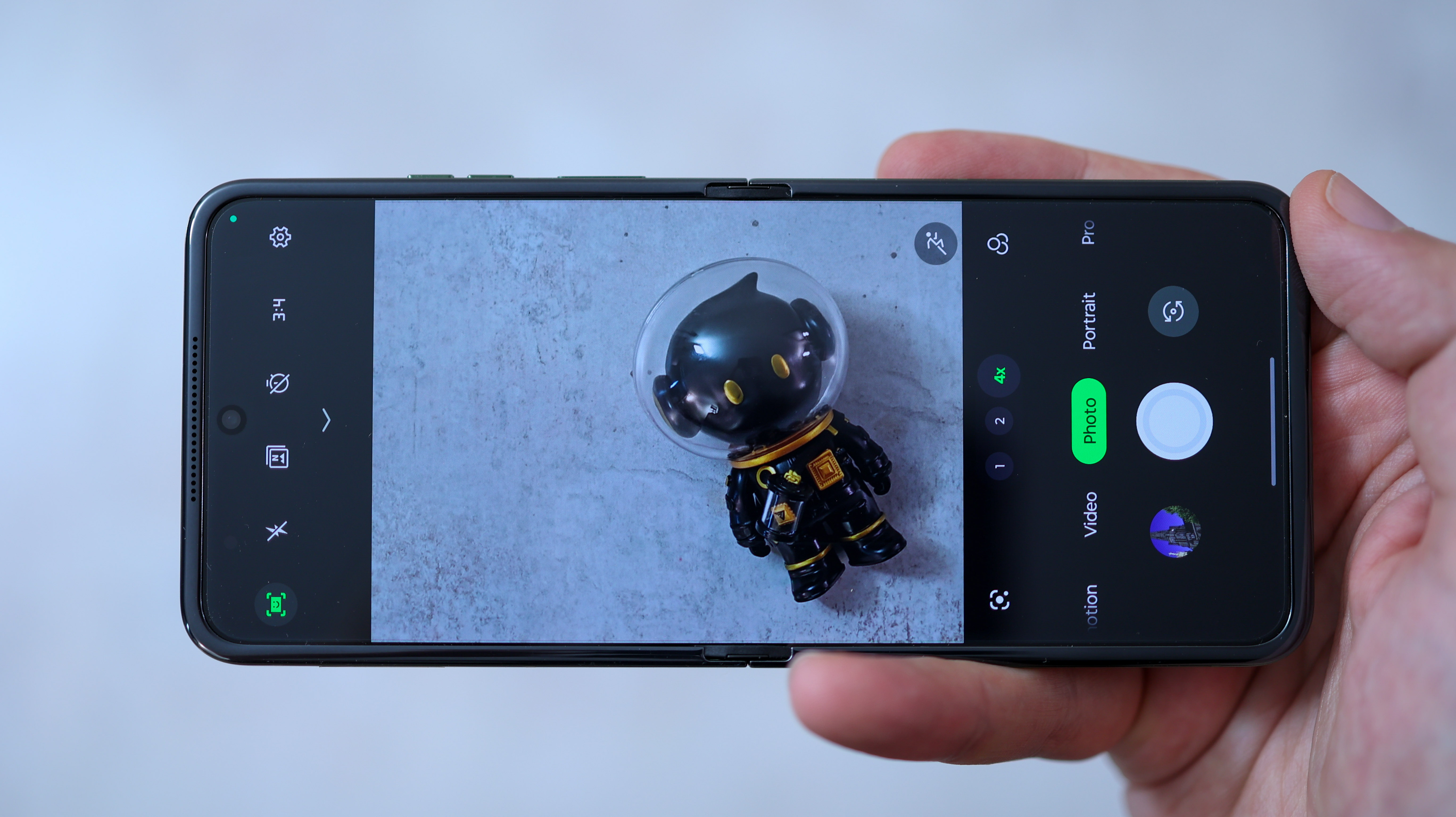
Razr 50 Ultra style and specs
One thing the Razr 40 Ultra didn't struggle with was style, and that standout look is carried forward for 2024. The added cover screen size really does lend some wow-factor to the phone's aesthetic when closed, and the colour options also work nicely, with our review device being Spring Green, and other options including Midnight Blue, Peach Fuzz, and Hot Pink.
Unlike last year's model, the Razr 50 Ultra is also IPX8 water resistant, and protection extends to the Gorilla Glass Victus front and a 6000 series high-strength aluminum frame. Weighing 189g, Motorola's made its latest flip phone light, considering it packs two screens and a hinge, though the battery capacity clearly takes a hit at 4000mAh, so it's one of the more modest cells around. On the plus, with 45W fast charging and a 68W charging brick in the box – powerful enough to charge your laptop – at least topping up won't keep you waiting.
When the phone is opened, a tall 6.9-inch pOLED display shines at up to 3000 nits peak brightness when playing back HDR content. It's also very smooth at up to 165Hz, and this quality is matched by the 165Hz cover screen, which sports a simple-to-navigate interface.
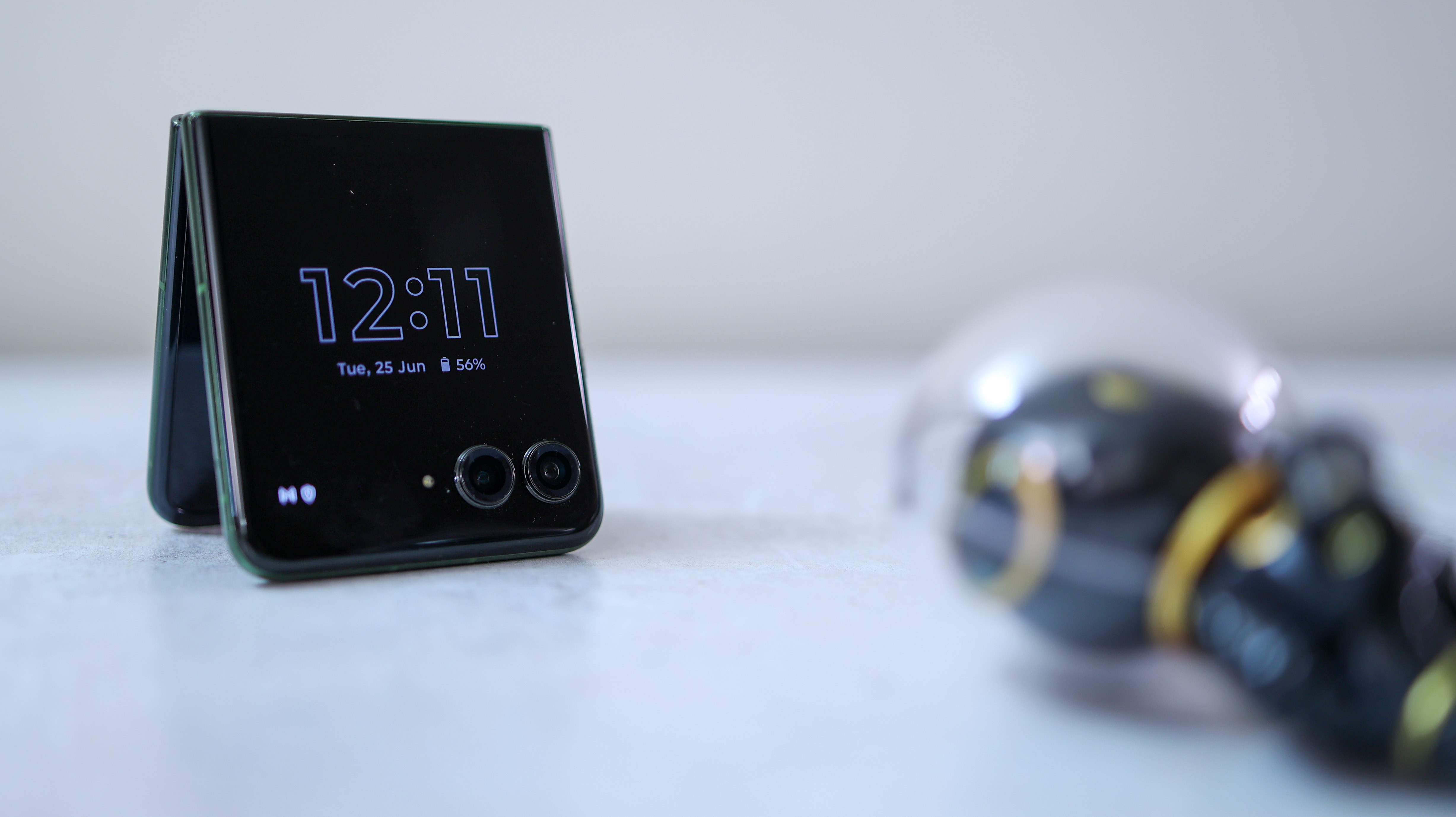
Motorola's added some nifty cover screen features like tent mode – part-fold the phone and stand it up – turning the cover screen into a desk clock thanks to a power-efficient always-on display. It also brings back gestures seen on past Moto phones, including wrist twist to fire up the camera and a double flick to launch the torch.
The new Qualcomm Snapdragon 8s Gen 3 chipset powering the 50 Ultra is also matched with an ample 12GB RAM and 512GB storage, so it should handle gaming and multitasking while giving you space for plenty of apps and files.
All things considered, the Razr 50 Ultra looks like a winning mix of style and substance, and it'll be interesting to see just how much Motorola can eke out of its dual 50MP camera system. Check back for the full review, and in the meantime, read our guide to the best foldable camera phones to scope out the 50 Ultra's main competition.
Basil Kronfli is a freelance technology journalist, consultant, and content creator. He trained in graphic design and started his career at Canon Europe before moving into journalism. Basil is also experienced in video production, independently running the YouTube channel TechEdit, and during his time at Future, he worked alongside the Digital Camera World team as a senior video producer.

